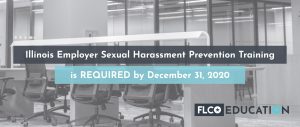Part three of a three-part series
In the first blog and second blog of this three-blog series, we discussed the importance of advocacy with both federal and state governments as a key benefit your organization provides members. We looked at ways to quickly build an outreach program that taps the resources you have in place as well as building a coalition of like-minded organizations. Now let’s turn our attention to strategy number three.
The term “lobbyist” carries a lot of baggage. We often hear it used negatively to generalize the occupants of K Street in Washington D.C. and their connections to corrupt influence. While there are a few bad apples, in reality, lobbyists play an important role in keeping legislators up-to-date on how proposals affect their constituents, industries, and even the economic well-being of the country.
Are you incorporating lobbyists in your government relations program for the benefit of your members?
If not, it may be time to rethink your strategy. If yes, are you getting the results you expected?
Lobbyists ≠ Government Affairs
Managing a lobbying firm can be difficult if you’ve never done it before. Like engaging any professional service—such as legal counsel, public relations, or accounting—it’s often hard to know where to start. The biggest mistake associations make is thinking that once the check is signed and a lobbyist is on board, all their government outreach needs are handled.
A quick tip: it’s just the beginning.
A lobbyist can cost $3k, $30k or $300k. As a client, you may wonder how you know what you’re getting. Lobbyists are only going to be effective if they know what they are advocating for and why.
Getting the most out of lobbyists
The right lobbyists are experts in the regulatory and legislative processes. Your lobbyist’s job is to get things done in the capitol. You can’t assume they know your industry or understand what priorities are important to you.
It may not be the best use of their time to require them to attend your board meetings or sit through hours of public policy analysis. That’s the job of your association’s executive director, public policy administrator, and/or government affairs committee. Once you’ve done your homework, then you can set your lobbyist up for success.
Communicate your association’s priorities and positions to your lobbyist regularly, and provide him or her with your talking points, position papers, research, and an overview of your internal or coalition outreach efforts. Communicate your expectations for in-person meetings with legislators, feedback, and next steps.
The right lobbyist arrangement for your organization
The first step is finding a lobbyist or lobbying firm that fits your needs in terms of understanding your goals, demonstrating success in your specialty area, and having the right staff that avoids any conflicts of interest.
Then, pick the working arrangement that’s best for your needs:
- Ongoing Retainer – this option is the most popular for associations that have ongoing issues that need visibility before legislators. The term of the agreement is usually annual but can vary in scope and number of lobbyists working on your behalf. The benefit of a retainer is the establishment of a long-term relationship with a firm that can bird-dog the legislature (federal, state, or both) and let you know when proposals arise that may affect statutes that are important to your industry.
- Short-term Contract – Every now and then, an urgent and unanticipated issue may emerge that requires immediate and focused attention by an association. Even with an ongoing retainer, significant issues may require lots of boots on the ground for a short time to ensure that every relevant decision-maker is reached.
- Self-lobbying – Some associations with mature government outreach programs and engaged members can manage lobbying efforts internally. But, this approach may be hard to sustain in the long run if key personnel or devoted and experienced volunteers leave the organization.
No matter what option you select, it’s essential to evaluate your lobbying efforts quarterly to measure their effectiveness and to plan ahead for the coming months.
Members count on your association to advocate for their best interests. Need to kick-start your government affairs program? Frontline has years of experience effectively engaging lobbyists and putting industry issues into perspective. Give us a call to learn more about how to manage your government affairs program.



